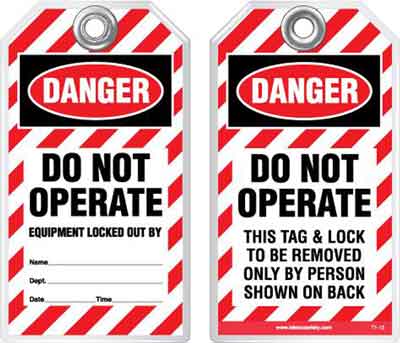Electrical Arc Flash

CSA Z462 Arc Flash Training - Electrical Safety Essentials
Our customized live online or in‑person group training can be delivered to your staff at your location.

- Live Online
- 6 hours Instructor-led
- Group Training Available
Download Our NFPA 70E Fact Sheet – 2024 Electrical Safety Edition

- Understand how NFPA 70E works with NEC and NFPA 70B standards
- Clarify the shared responsibility between employers and employees
- Learn how NFPA 70E supports OSHA compliance
Electrical arc flash is a high-energy hazard from fault currents, releasing intense heat and pressure; NFPA 70E compliance, PPE, incident energy analysis, arc flash boundaries, and labeling support risk assessment and mitigation in switchgear.
What Is Electrical Arc Flash?
Electrical arc flash is a high-energy fault causing intense heat and pressure; mitigated by NFPA 70E PPE and controls.
✅ Identify incident energy and arc flash boundary via study.
✅ Apply NFPA 70E PPE categories and labeling.
✅ Mitigate with remote racking, arc-resistant switchgear.
An electrical arc flash is a dangerous and potentially deadly event that can occur when an arcing fault travels through the air instead of its intended conductor, creating a short circuit or arc. This can happen in a variety of settings, such as power plants, manufacturing facilities, and even in homes and offices. For a concise overview, see the arc flash definition and key concepts explained.
Electrical Arc Flash occurs more often than you think. It produces some of the highest temperatures on earth - up to 35,000 degrees Fahrenheit at the arc terminals. The heat energy is four times the surface temperature of the sun. These extreme thermal conditions are central to the arc flash blast explosion mechanisms documented in industry research.
Visit our CSA Z462 Arc Flash Training Page
During an explosion, arc flash can reach several thousand degrees Celsius, causing an intense and explosive release of energy, light, and sound. This can result in burns, injuries, and even death to those in close proximity to the blast. As a result, the National Fire Protection Association nfpa has produced a workplace electrical safety standard called NFPA 70E. To understand when these events are most likely, review the circumstances under which an arc flash can occur to support risk assessments.
Sign Up for Electricity Forum’s Arc Flash Newsletter
Stay informed with our FREE Arc Flash Newsletter — get the latest news, breakthrough technologies, and expert insights, delivered straight to your inbox.
In Canada, CSA Z462 is the recommended standard for workplace safety.
Technicians and supervisors benefit from clarifying how an arc flash occurs before drafting or updating procedures.
Visit our NFPA 70E Arc Flash Training Page
To prevent an arc flash, it is essential to follow safety protocols, such as using proper personal protective equipment, de-energizing equipment before servicing or maintenance, and maintaining a safe distance from equipment when it is energized. Employers should also ensure that their employees are trained in electrical safety and that safety procedures are always followed. Understanding the destructive forces associated with an electrical explosion reinforces the need for strict lockout/tagout and verification practices.
Causes of Electrical Arc Flash
There are various causes, some of which include:
-
Equipment failure: Electrical explosions can occur when equipment fails, leading to a short circuit or an arc.
-
Accidental contact: Accidental contact with live parts, such as when someone touches or drops a tool onto an energized conductor, can also cause an explosion.
-
Improper installation: Explosions can be caused by improper installation of equipment or components, such as inadequate grounding, loose connections, or overloading in circuit breakers.
-
Human error: Human error can also cause explosions, such as miscommunication during maintenance or repair work, failure to follow safety procedures or inadequate training.
-
Environmental factors: Environmental factors such as humidity, dust, or corrosion can also contribute to explosions, increasing the likelihood of equipment failure or electrical discharge.
It is essential to identify the causes of an arc flash event to prevent such events from happening. Employers should train their employees on the causes and risks of accidents and ensure that safety protocols are always followed. Regular equipment maintenance and inspections can also help identify potential hazards and prevent incidents. For foundational context that aids hazard recognition, revisit what an arc flash is and how it differs from shock hazards.
The Nature of Electrical Arc Flash
An electrical arc flash is a sudden, explosive release of energy that occurs when an current flows through the air instead of its intended path, such as through a conductor. The energy released during an explosion can be extremely high, causing temperatures to rise to several thousand degrees Celsius, creating a bright light and loud noise. In addition, the AF can cause an intense blast of pressure, debris, and hot gases, resulting in serious injuries, burns, or even fatalities to people nearby. These dynamics often manifest as an intense electrical arc blast that propels shrapnel and superheated gases.
The duration and intensity of an explosion depend on several factors, including the amount of energy released, the proximity of individuals to the blast, and the type and condition of the equipment involved. Electrical explosions can also produce a large amount of molten metal, which can cause additional damage to equipment and nearby structures.
In addition to the physical damage caused by an explosion, it can also have long-term effects on the health of individuals exposed to it. For example, the bright light and loud noise produced by a blast can cause vision and hearing damage, and the intense heat can cause burns and other thermal injuries. In addition, the pressure wave generated by the AF can cause traumatic injuries, such as concussion, blunt force trauma, or even permanent hearing loss.
Preventing such occurrences is critical to protecting individuals and property from harm. Therefore, employers should take appropriate measures to identify and mitigate potential hazards associated with systems, provide employees with proper training and protective equipment, and ensure that safety protocols are always followed.
Test Your Knowledge About Arc Flash!
Think you know Arc Flash? Take our quick, interactive quiz and test your knowledge in minutes.
- Instantly see your results and score
- Identify strengths and areas for improvement
- Challenge yourself on real-world electrical topics
How can I protect myself from electrical arc flash?
Protecting yourself from the electrical arc is essential to prevent injuries or fatalities. Here are some ways to protect yourself from the dangers of arc flash:
-
Wear appropriate personal protective equipment (PPE): Protective equipment such as fire-resistant clothing, gloves, safety glasses, and face shields can help protect against the heat, light, and debris produced by an explosion.
-
Follow safety procedures: Always follow safety procedures when working with or around systems, including de-energizing equipment before servicing or maintenance, using lockout/tagout procedures, and maintaining a safe distance from energized equipment.
-
Get proper training: Ensure you are trained on electrical safety procedures and best practices, and keep up-to-date with any changes or updates to safety protocols.
-
Use insulated tools: Insulated tools can help prevent accidental contact with live components.
-
Conduct regular maintenance: Regular maintenance and inspection of equipment can help identify potential hazards and prevent explosion incidents.
-
Install protective barriers: Installing protective barriers, such as enclosures or barricades, can help prevent accidental contact with energized equipment.
-
Stay alert and aware: Be aware of your surroundings and alert for potential hazards, such as damaged equipment, exposed wiring, or improperly installed components.
Following these safety measures and taking appropriate precautions can help protect yourself from the electrical arc and reduce the risk of injury or harm.








